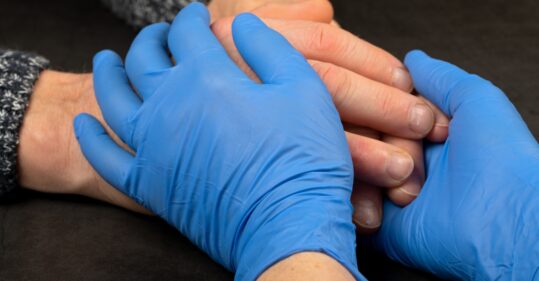Covid-19: Social care staff death rate twice that of general population

Social care staff have twice the coronavirus death rate as others of the same age and sex, official data has revealed.
Office for National Statistics figures showed social care staff deaths in England and Wales among the working population of 20- to 64-year-olds was 23.4 deaths per 100,000 males and 9.6 deaths per 100,000 females.
Related Article: QICN bids farewell to Dr Crystal Oldman as she retires from CEO role
For the general population, the death rate was 9.9 deaths per 100,000 among males compared to 5.2 deaths per 100,000 females, according to the statistics released yesterday.
The report said: ‘Men and women working in social care, a group including care workers and home carers, both had significantly raised rates of death involving Covid-19.’
But health workers, such as nurses and doctors, did not have a higher death rate than the general population – and also followed the pattern of males having a higher death rate (10.2 deaths per 100,000) than females (4.8 deaths per 100,000).
The majority of the deaths in social care – 98 out of 131 – were among care workers and home carers. Other roles included were social workers, managers of residential care institutions and care escorts.
Related Article: RCN to offer ‘safe space’ to discuss Supreme Court ‘sex’ ruling
The ONS data was a provisional analysis of Covid-19 deaths by occupation up until 20 April. The organisation said the data ‘does not prove conclusively’ that the differing death rates were caused by occupational exposure to Covid-19.
The data was adjusted for age but did not take into account other factors, such as ethnic group and place of residence.
Last week, care home directors told Nursing in Practice that adult social care has not yet faced the peak of coronavirus infections after Covid-19 deaths in care homes nearly doubled in a week.
Related Article: ‘Concerning acceleration’ in drug-resistant gonorrhoea ahead of vaccine programme
RCN chief executive Dame Donna Kinnair yesterday warned that nurses must have adequate personal protective equipment and testing before the lockdown is scaled back any further.

See how our symptom tool can help you make better sense of patient presentations
Click here to search a symptom


Social care staff have twice the coronavirus mortality rate as others of the same age and sex, official data has revealed.



